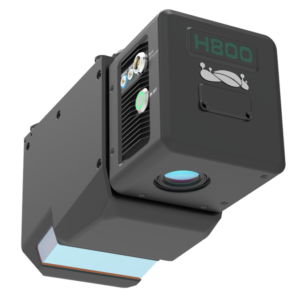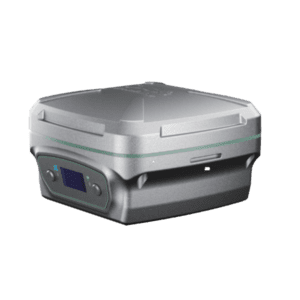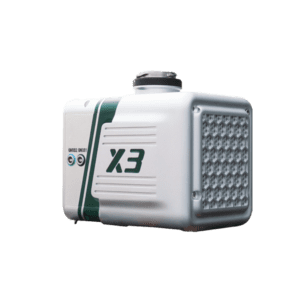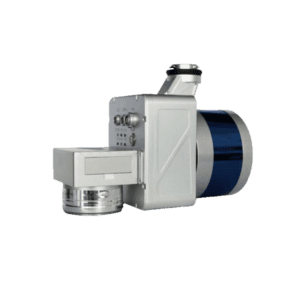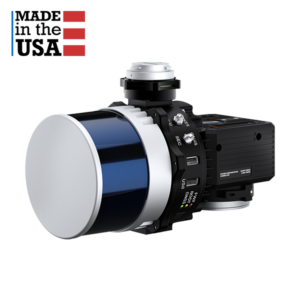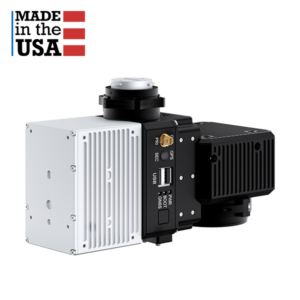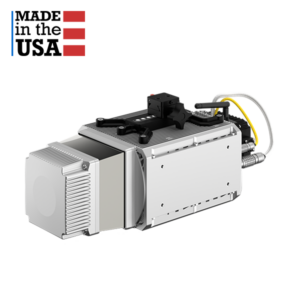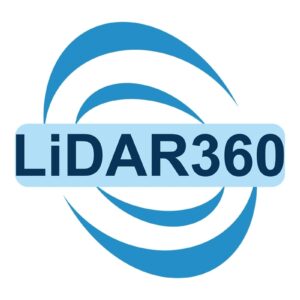Why Aerial LiDAR Scanner?
Drone-based lidar systems provide high resolution data
Drone-based LiDAR, a new type aerial mapping technology, provides high-resolution data. These scanners operate using direct georeferencing and Inertial Measurement Unit (IMU) measurements. The drone carries out the measurement process by shooting pulses of light that bounce off vegetation and return to the scanner.
Drone-based LiDAR systems are capable of providing extremely high-resolution data at a low cost. Compared to manned aircraft, UAVs can survey large areas quickly and efficiently. They also require less staff and can fly for longer periods of time. Drone-based LiDAR is a cost-effective alternative to aerial mapping.
LiDAR drones can cover up to four miles in one flight. They can achieve absolute accuracy of up to four inches horizontally and two inches vertically. This gives you the highest resolution data possible.
They are more maneuverable that terrestrial systems
LiDAR is an imaging technique used to determine terrain and other features. It is used in the construction industry for a variety of purposes and is also available on private drones. The two main differences between terrestrial and drone radar are the amount of information that can be collected and the cost. Drones are easier to maneuver than terrestrial systems, and can collect data from a wider area.
Aerial LiDAR, on the other hand, involves placing a similar type of laser scanning sensor in the air. This system can be attached to a drone, helicopter, or airplane. These systems can quickly scan an area because they are able to scan downward from an aerial view. They also can cover more terrain than terrestrial systems, which may need multiple scanning positions to cover a large area.
Aerial LiDAR Scanning System
Multi-Rotor UAV LiDAR Scanning Payloads
-
UAV LiDAR Payloads
LiAir H800 Drone LiDAR Scanner – Long Range & High Efficiency UAV Scanning
Request For Quote Read MoreRated 0 out of 5 -
GNSS Receiver
LiBase – GNSS RTK GPS Receiver for Both Rover & Base Station – IMU Supported
US$2,916.00 Excl. GST/VAT Add to cartRated 0 out of 5 -
Entry Level drone LiDAR
LiAir X3 + LiGeo Software and Camera – Global Shipping – Free Software Included
Request For Quote Read MoreRated 0 out of 5 -
Entry Level drone LiDAR
LiAir X3C-H Drone LiDAR Scanner – 32 Channel LiDAR Sensors – 300M Dection Range
Request For Quote Read MoreRated 0 out of 5 -
drone lidar with premium INS
RESEPI-HESAI XT32 – From Inertial Labs, Manufactured In USA
Request For Quote Read MoreRated 0 out of 5 -
drone lidar with premium INS
RESEPI-HESAI XT32M2X – From Inertial Labs, Manufactured In USA
Request For Quote Read MoreRated 0 out of 5 -
drone lidar with premium INS
RESEPI-LIVOX AVIA – From Inertial Labs, Manufactured In USA
Request For Quote Read MoreRated 0 out of 5 -
drone lidar with premium INS
RESEPI-TELEDYNE CL-360HD – From Inertial Labs, Manufactured In USA
Request For Quote Read MoreRated 0 out of 5
Airborne LiDAR Scanning System
LiDAR system for Helicopter Installations
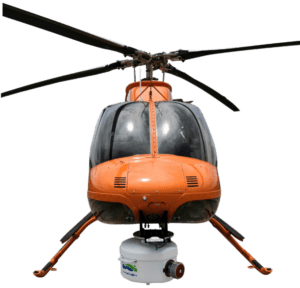
The airborne laser scanner is an efficient, fast, and highly accurate method to capture 3D data from large areas such as urban areas or forestry sites. GVI LiEagle is equipped with the most up-to-date laser and signal processing technology. They are extremely compact, lightweight, and cost-effective and can meet even the most difficult requirements of airborne surveying. It is suitable for a large scale laser scanning projects.
LiEagle airborne LiDAR Scanner is an aerial LiDAR surveying system designed for large area and long-range 3D data collection projects. The system is designed to be mounted to a helicopter platform and features a Riegl VUX-1LR (the LiDAR sensor is customizable, and the other model of Riegl sensor can be integrated as well) laser scanner coupled with a best-in-class inertial measurement unit (IMU) for increased point cloud accuracy and precision. The LiEagle is well-suited for projects aiming to map terrain features beneath forest canopies and extract structural parameters from forest LiDAR data. The centimeter-level accuracy of this measurement device will meet the rigorous accuracy demands of civil engineering and critical infrastructure maintenance professionals.And an optional high-definition (50 megapixels) digital camera module can be used to generate photogrammetry products as well as true color 3D point clouds during each LiDAR survey.
At a flight-height (AGL) of 200 meters, the LiEagle airborne LiDAR Scanning system can generate 3D point clouds with absolute horizontal and vertical accuracies that are less than 10 cm.
We also delivers custom acquisition software with its LiEagle system which supports the importation of .kml & .xls formatted flight routes as well as a real-time flight status display for users to monitor during data collection. This easy-touse program also allows operators to correct flight attitude induced errors and thereby improve the quality of LiDAR data collected.
The LiEagle supports a 45° inclination angle installation, which holding other operating conditions constant will increase point cloud density by more than 30% (compared to a 0° inclination angle installation). This feature makes LiEagle particularly useful to those seeking to survey powerline assets and corridors while collecting high-quality (complete) transmission tower point cloud data.
Fixed-wing UAV LiDAR Scanning Payloads
LiHawk is an aerial LiDAR surveying system designed for large area and long-range 3D data collection projects. The system is designed to be mounted to a fixed-wing airplane platform or multi-rotor UAV and features a Riegl VUX-1LR laser scanner coupled with a best-in-class inertial measurement unit (IMU) for increased point cloud accuracy and precision. LiHawk is well-suited for projects aiming to map terrain features beneath forest canopies and extract structural parameters from forest LiDAR data. The centimeter-level accuracy of this measurement device
will meet the rigorous accuracy demands of civil engineering and critical infrastructure maintenance professionals. And the high-definition digital camera module can be used to generate photogrammetry products as well as true color 3D point clouds during each LiDAR survey.
The system can be mounted on different platforms (e.g. UAV LiAir series or fixed-wing airplane platform) for data collection. LiHawk is a highly integrated LiDAR system, with only 4.0 kg weight without a camera. The system supports an external solid-state drive to store the collected data, which eliminates the time to download data from the system and improves operational efficiency.
We also support self-developed software for data collection, data georeferencing, data post-processing and data analysis. GVI’s Software Suite provides you a one-stop solution without using any other third-party software.
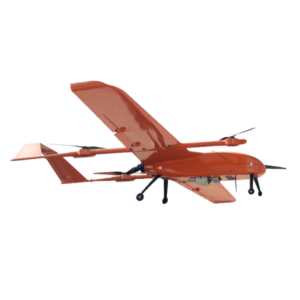
LiBase - Premium GNSS Base Station For Aerial LiDAR Scanning System
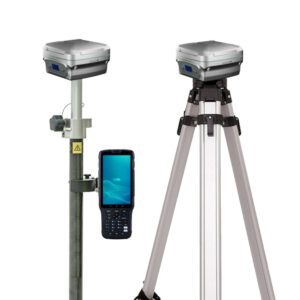
-
GNSS Receiver
LiBase – GNSS RTK GPS Receiver for Both Rover & Base Station – IMU Supported
US$2,916.00 Excl. GST/VAT Add to cartRated 0 out of 5
FULL-CONSTELLATION with Advanced RTK Algorithm – Featuring 1198 channels for full constellation tracking, LiBase can achieve reliable centimeter-level accuracy positioning. Benefiting from the strong signal tracking and advanced RTK algorithm with K8 GNSS OEM module, LiBase adapts to various complex and harsh environments and ensures centimeter-level positioning accuracy.
Lightweight, Compact, and Mobile
At only 0.85kg with two batteries; it can be easily held with one hand and can be put into any pocket. Hot swap batteries with 6600mAh large capacity support more than 12hrs working times and less than 3hrs charging times.
OLED & WEB UI
Through the OLED display, functional buttons, and indicators, you can directly perform status checking and configuration of LiBase. Meanwhile, users also can easily configure work modes, download data, upgrade firmware and check device status via web UI after WiFi connection.
More Connectivity
LiBase GNSS has all the connectivity features a surveyor needs to complete any GNSS surveying project scenario. Built-in Wi-Fi, Bluetooth, and QR code provide a seamless connection to field data controllers and tablets. Integrated 4G and UHF modems enable any GNSS surveying mode, from RTK Networks NTRIP connections to UHF base-rover configuration. GNSS RTK corrections are accessed or broadcasted continuously for accurate positioning in all circumstances.
LiDAR Point Cloud Processing Software for Aerial LiDAR Scanning System
LiGeoreference is proprietary software that allows users to convert range measurements and POS information from mobile, UAV or airborne laser scanning systems to georeferenced
coordinates. The software provides flexible solutions for generating 3D point clouds in LAS or LiData formats with LiDAR returns mapped to a userspecified datum ( e.g. WGS 1984) and/
or projection system ( e.g. UTM). LiGeoreference also provides data fusion tools to assign LiDAR points with color information based on the color imagery integrated into the laser scanning
system. Laser scanners from multiple providers, such as Riegl and Velodyne, are supported.
Features
• Automatically calculate the georeference coordinates of LiDAR point cloud from mobile, UAV orairborne laser scanning systems.
• Fuse LiDAR point clouds with RGB imagery to assigned color information to each LiDAR point.
• Support the output of both geographic coordinates and projected coordinates.
• Support the process of laser scanning measurements from multiple laser scanner providers.
-
LiDAR Point Cloud Processing Software
LiDAR360 Aerial LiDAR Point Cloud Processing & Analyzing Software – 1 Year Subscription
US$4,300.00 Excl. GST/VAT Add to cartRated 0 out of 5
LiDAR360 is a comprehensive point cloud post-processing software that includes a variety of toolsets to efficiently visualize, manipulate and generate meaningful geospatial products from point cloud data.
ALS/TLS Forestry
• Classification and extraction of vegetation layers
• Create CHM, tree segmentation,bulk DBH extraction
• Forest parameter extraction and forest structure change analysis
Terrain Mapping
• Roads and buildings vectorization
• Extract topographic surveying results such as DEM, DSM, DLG, aspect, etc.
• Quickly perform earthwork over-under-excavation analysis, real-time acquisition of measurement sections
Mine Surveying
• Generate highly accurate and precise 3D models of the tunnel
• Compare the differences to monitor the tunnel deformation
• Measure the trend of soil erosion on slopes and the volume of sand dunes
Powerline Inspection and Analysis
• One-click quick and automatic point cloud classification
• Detection of dangerous points affecting power line safety
• Scissors crossing analysis with target category points

